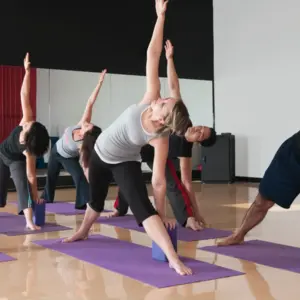

Exercise, Energy and Movement

Exercise, Energy and Movement
Shortening Your Child’s Cold
The next time your preschooler is home with a cold, you may want to skip the cartoons and play outside instead. Physical activity has been known to have countless benefits, and now researchers in Poland have found that it may also shorten the length of your child’s cold.
Pre-school children are especially vulnerable to infections due to their developing immune and respiratory systems, and even healthy children typically catch multiple colds a year. Although usually mild and resolving on their own, even a mild cold can affect a child’s quality of life, cause parental distress, and lead to family stress, occupational disruption, and health care burden over the long term.
In a cross-sectional study published in Pediatric Research, researchers studied a group of children aged 4 to 7 years, monitoring their upper respiratory tract infection symptoms using a survey tool (the Polish version of the Wisconsin Upper Respiratory System Survey for Kids). The daily number of steps, intensity of physical activity, and sleep duration were measured with a pedometer. The lag effect between the initial level of daily physical activity and the frequency of infections was evaluated.
Higher baseline levels of physical activity were found to be associated with fewer days of symptoms from upper respiratory tract infections. As the average daily number of steps taken increased by 1,000, the number of days that cold symptoms (most commonly cough and runny nose) were experienced decreased by an average of 4.1 days over the study period. Children who participate in sports three or more hours per week were also found to have fewer upper respiratory tract infections than those who do not engage in sports regularly.
On the other hand, lower baseline levels of physical activity were associated with an increased risk of upper respiratory tract infections, with symptom severity depending on the number of daily steps.
World Health Organization (WHO) guidelines recommend an average of 60 minutes of moderate-to-vigorous physical activity per day for all ages. However, many children may not be reaching this target, and additional, increased physical activity should be encouraged for immune stimulation.
Physical activity is a low-cost, accessible intervention that most parents could easily implement. Parents of pre-school-aged children should encourage physical activity in their children every day, especially if their children do not regularly participate in sports activities.
REFERENCES
Ostrzyżek-Przeździecka, K., et al. (2023, January 24). Association of low physical activity with higher respiratory tract infections frequency among pre-school children. Pediatric Research. https://www.nature.com/articles/s41390-022-02436-7


 By
By






